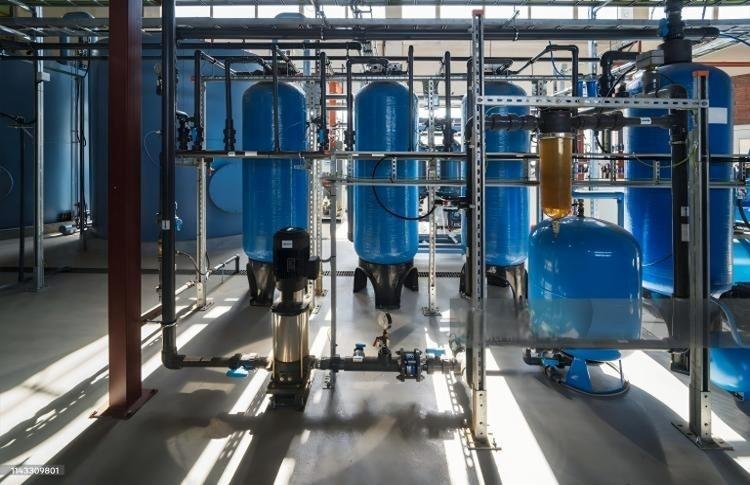Ósmosis inversa (RO) sistemas se usan ampliamente para la purificación del agua debido a su efectividad en la eliminación de contaminantes. Sin embargo, para Membranas RO para operar de manera eficiente y tener una vida útil prolongada, Es crucial diseñar procesos de pretratamiento que aborden parámetros específicos de calidad del agua. Este enfoque dirigido ayuda a prevenir problemas como el ensuciamiento, escalada, y degradación prematura de la membrana. Entre los indicadores de calidad del agua más importantes para el diseño de pretratamiento se encuentran IDE, Turbiedad, ph, Dureza, Composición de iones, BACALAO, Cuerpo, Oxidantes, y Contaminantes químicos.
1. IDE (Índice de densidad de limo)
SDI mide el potencial de ensuciamiento por sólidos y microorganismos suspendidos. Un SDI alto indica un mayor riesgo de ensuciamiento de membrana, Requerir un pretratamiento más intensivo. Típicamente, Un SDI debajo 5 es ideal para sistemas RO, aunque valores de arriba 5 requiere filtración adicional o tratamiento químico.
| Nivel de SDI | Acción recomendada |
|---|---|
| 0-3 | Filtración normal |
| 3-5 | Requerido previamente a la filtración |
| >5 | Se necesita tratamiento químico |
2. Turbiedad
La turbidez se refiere a la nubosidad o la posibilidad del agua causada por partículas suspendidas. La alta turbidez puede bloquear los poros de la membrana RO, causando ensuciamiento. Para la mayoría de los sistemas RO, Los niveles de turbidez deben estar por debajo 1 NTU antes de que el agua ingrese al sistema.
| Turbiedad (NTU) | Recomendación previa al tratamiento |
|---|---|
| <1 | Filtración estándar |
| 1-5 | Filtración mejorada (P.EJ., coagulación) |
| >5 | Requerido pretratamiento extenso (P.EJ., floculación) |
3. niveles de pH
El pH del agua de alimentación afecta tanto el material de la membrana como la solubilidad de ciertas sales. Un pH que es demasiado bajo o demasiado alto puede causar la degradación de la membrana. Típicamente, valores de pH entre 6.5 y 8.5 son ideales para los sistemas RO. El pretratamiento a menudo incluye el ajuste de pH a través de la dosificación de ácido o álcali cuando sea necesario.
4. Dureza
Agua dura, que contiene altos niveles de calcio y magnesio, puede llevar a escalar en la membrana RO. El nivel de dureza aceptable para los sistemas RO está generalmente a continuación 300 mg/l. Para agua con mayor dureza, Es necesario ablandar o el tratamiento anti-escalante.
| Dureza (mg/l) | Recomendación previa al tratamiento |
|---|---|
| <300 | No se necesita tratamiento |
| 300-500 | Requerido el tratamiento de ablandamiento |
| >500 | Se requiere un ablandamiento intensivo |
5. Composición de iones
La presencia de iones como el calcio (Ca²⁺), sulfato (So₄²⁻), y bicarbonato (HCO₃⁻) afecta tanto las tendencias de ensuciamiento como de escala. Para un pretratamiento efectivo, dureza del agua, alcalinidad, y sólidos disueltos totales (TDS) debe ser monitoreado regularmente para garantizar la dosificación apropiada de anti-escalientes y coagulantes.
6. BACALAO (Demanda de oxígeno químico) y cuerpo (Demanda bioquímica de oxígeno)
COD y BOD son indicadores críticos de la contaminación orgánica. Los altos niveles de COD y BOD indican la presencia de sustancias biodegradables y no biodegradables que pueden conducir al ensuciamiento microbiano de la membrana. Para la mayoría de los sistemas RO, Los niveles de bacalao deberían estar idealmente debajo 50 mg/l, y el cuerpo debe mantenerse bajo 5 mg/l.
| Parámetro | Rango ideal | Acción recomendada |
|---|---|---|
| BACALAO (mg/l) | <50 | Filtración estándar |
| Cuerpo (mg/l) | <5 | Tratamiento biológico |
7. Oxidantes y contaminantes químicos
Oxidantes como el cloro pueden dañar la membrana RO. La concentración de cloro en el agua de alimentación debe minimizarse a menos de 0.1 mg/l. Contaminantes químicos como pesticidas, metales pesados, y los aceites también representan una amenaza para la integridad de las membranas de RO. Los procesos de pretratamiento como la filtración de carbono activado y la decloración son esenciales para proteger el sistema.
Conclusión
En conclusión, El pretratamiento del agua antes de ingresar a un sistema RO es crucial para optimizar el rendimiento y extender la vida útil de la membrana. Indicadores clave de calidad del agua como IDE, Turbiedad, ph, Dureza, Composición de iones, BACALAO, Cuerpo, y la presencia de Oxidantes y Contaminantes químicos debe ser monitoreado y abordado de cerca con soluciones específicas. Al adaptar los procesos de pretratamiento a las necesidades específicas de la fuente de agua, Puede garantizar el funcionamiento eficiente del sistema RO y minimizar los costos operativos.
Comprender estos parámetros de calidad del agua es vital para lograr resultados óptimos previos al tratamiento.

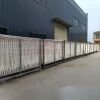 Membrana MBR
Membrana MBR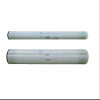 Membrana de ósmosis inversa
Membrana de ósmosis inversa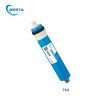 Membrana RO residencial
Membrana RO residencial Membrana UF
Membrana UF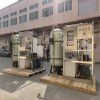 Planta de tratamiento de agua
Planta de tratamiento de agua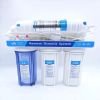 Máquina residencial RO
Máquina residencial RO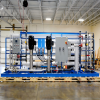 Sistema RO salobre
Sistema RO salobre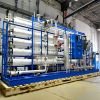 Sistema de agua de mar/planta SW ro
Sistema de agua de mar/planta SW ro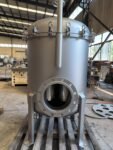 Filtro de bolsa
Filtro de bolsa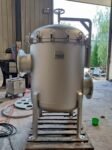 Filtro de cartucho
Filtro de cartucho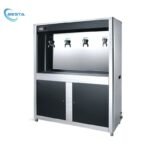 Sistema de filtración de agua comercial
Sistema de filtración de agua comercial Sistema de limpieza de membrana(Titubear)
Sistema de limpieza de membrana(Titubear)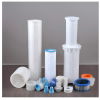 Accesorios de consumo
Accesorios de consumo